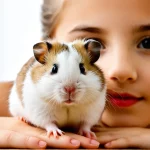Surprising Origins and Development of UK Dog Breeds
The British dog breed history reveals a fascinating tapestry of ancient origins shaped by the needs of local communities. Many UK breeds were developed for very specific roles—from herding livestock to hunting game—reflecting the geography and culture of their regions.
For example, the Border Collie originated in the borderlands between Scotland and England. This breed’s evolution highlights the importance of herding in rural UK life. Similarly, the Welsh Corgi’s origins trace back to farmers in Wales who required a small, agile dog that could herd cattle by nipping at their heels.
In parallel : What Are Unique Ways to Bond with UK Dogs?
Some rare UK breeds have even more unexpected histories. The Otterhound, developed for otter hunting along English rivers, is now considered a rare UK breed due to its dwindling numbers. Meanwhile, the Norfolk Terrier was bred for pest control in East Anglia, reflecting niche roles in local environments.
Crossbreeding stories further enrich UK breed origins. Many dogs popular in Britain emerged from a mix of native breeds and imported types, leading to unique combinations. Understanding these lesser-known evolutions provides insight into how adaptability and utility drove breed development in the UK.
In parallel : How Do Dogs Perceive Human Emotions?
These details highlight that UK dog breeds are not just companions but living links to British heritage and function.
Uncommon Behavioral Traits and Abilities
British dog breeds exhibit intriguing behavioral traits and breed-specific skills that set them apart. For example, some breeds show remarkable scenting abilities, making them excellent in tracking or vermin control. This is especially evident in breeds like the Border Terrier, known for its tenacity and distinct skills in hunting small prey.
In the context of UK dog intelligence, many native breeds demonstrate a curious blend of independence and obedience. Herding breeds such as the Welsh Corgi display an instinctive aptitude for managing livestock, while showing surprising adaptability both on sprawling rural farms and in confined urban spaces. Such adaptability highlights the versatility of these dogs in varying environments.
Another unusual behavioral trait is how certain British breeds exhibit specific quirks, like the Bedlington Terrier’s gentle temperament paired with a fierce hunting drive. This mix of traits contributes to the breed’s unique dog breed behavior UK enthusiasts appreciate.
Notably, these behaviors go beyond common expectations, offering insight into how British breeds have evolved to meet both practical needs and companionship roles fluidly. Understanding these traits enhances appreciation for the rich diversity in the UK’s canine landscape.
Roles and Legends in British Culture
Exploring the deep bond between dogs and British identity
Dogs have long held a prominent place in British culture, symbolizing loyalty, courage, and companionship. Several British dog breeds, such as the Border Collie and the Bulldog, are ingrained in national identity. The Bulldog, for instance, epitomizes British resilience, often used as a mascot during wartime. Folklore also celebrates dogs as guardians and mystical creatures, with tales passed down through generations.
Famous UK dogs have left their mark beyond mere companionship. Greyfriars Bobby, a Skye Terrier, became legendary for his unwavering loyalty, famously guarding his owner’s grave for years. Such stories resonate deeply and reveal the emotional roles dogs play in British households. Additionally, royal dogs, like Queen Victoria’s beloved King Charles Spaniels, influenced breed popularity and showcased the nobility’s affection for canines.
Rarely told narratives highlight dogs’ extraordinary achievements, such as working dogs during the World Wars who undertook critical missions like message delivery or search and rescue. These anecdotes emphasize dogs’ multifaceted roles, not just as pets but as vital contributors to British history and culture. Understanding these stories offers a richer appreciation of the unique heritage British dog breeds bring to the cultural landscape.
Little-Known Facts About Breed Health and Rarity
Exploring rare UK dog breeds reveals fascinating health curiosities that can guide prospective owners and enthusiasts alike. Some breeds display unexpected health strengths, such as natural resistance to common canine illnesses, while others may have vulnerabilities requiring special care. For example, certain small native breeds exhibit remarkable longevity, often living well beyond the average dog lifespan. These health traits are sometimes linked to the breed’s size extremes or unique physical features, such as distinctive coat types that offer added protection from harsh weather.
Breed populations fluctuate, impacting rarity status. Several breeds once common have become rare due to changes in demand or breeding practices. Conservation efforts now aim to preserve genetic diversity within these rare UK dog breeds, supporting sustainable breeding programs and encouraging public awareness. Understanding these efforts helps explain why some breeds remain rare despite being native to the UK.
In summary, paying attention to these health curiosities and rarity factors is essential. They underscore the importance of responsible breeding and informed ownership, ensuring the continued survival and well-being of the UK’s unique canine population.

